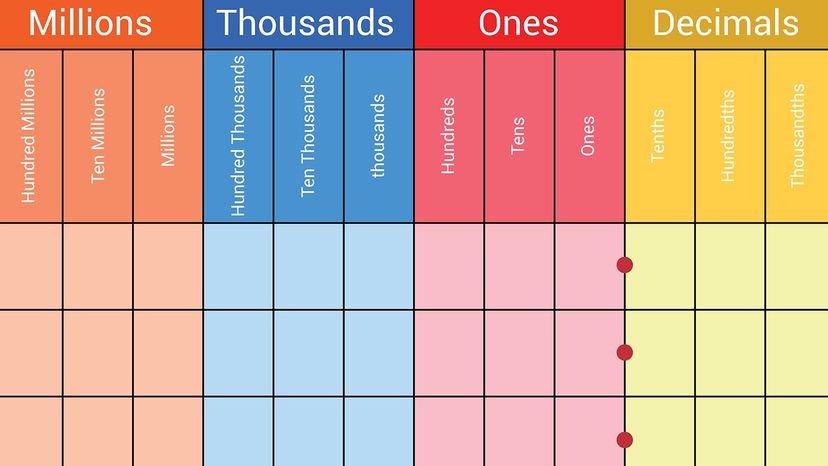
The concept of place values is fundamental to mathematics and the number system, particularly when you're dealing with whole numbers and decimal numbers. A place value chart is an essential tool that can help students visualize the position of each digit in a number and understand its actual value within the context of the number.
For example, the place value system could help you decipher which digit in a large whole number is in the ones, tens, hundreds, thousands, millions or billions place. Or it could help you determine which digit to the right of the decimal point in a very small decimal number is in the tenths, hundredths, or thousandths place.
Advertisement
Let's take a closer look at what a place value chart is and explore a few suggestions for using one.